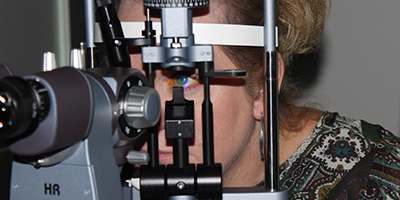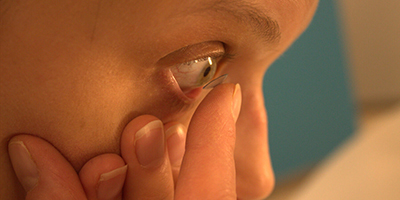
Impact of SAG Height on SCL fitting
Historically, soft lens fitting has been straightforward becoming even more so over the past decade. Choose a specific design from a soft lens manufacturer and you will be provided with a base curve/diameter option – which may be the only option in a limited parameter lens. Likely this will work well for 75-80% of patients; but what about the other 20-25%?
What do you want to do to make a change? Choose another brand with a different base curve; or a different base curve/diameter combination? How do you know the changes will work?
This is an important question and possibly, we should consider sagittal depth (SAG) values instead of simply base curve as a determinant in lens design.
What is SAG?
Sagittal measurements can be made of either the ocular surface or a contact lens and are defined as the distance from a flat plane or chord to a specific point, usually the posterior apex of the eye or lens.
Ocular SAG can be measured by OCT or topography, but our discussion here will focus only on the lens itself.
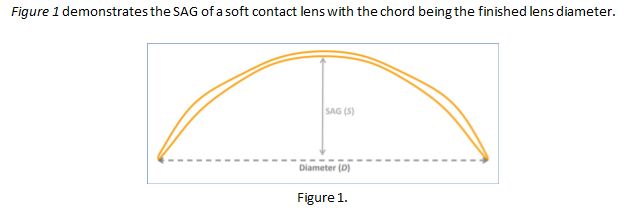
Why base curve is not a meaningful measurement in soft lenses
Soft contact lenses can be fabricated by either a molding process or by lathing, which is the case for most custom lens designs. Lenses may also have either spherical or aspherical posterior surfaces.
After fabrication, lenses are immersed in saline where they “swell” to the expected size and thicknesses.
This makes it difficult to have a specific base curve radius. In fact, a recent study1 that compared expected SAG values vs actual measurements found numerous differences. This is critically important if changing from one brand to another with same base curve and diameters but different SAGs. Figure 2.
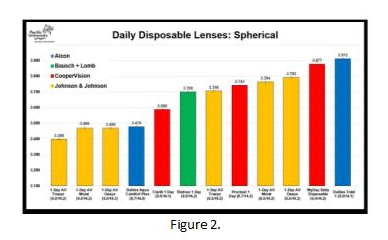
There are other unknown variables which may affect the SAG on-eye, e.g., the modulus of elasticity, the interaction of the CL with the upper eyelid, and the quality of the tear film among others.2
A series of Concise Custom Soft Lenses in both a hydrogel and silicone hydrogel materials were analyzed for their SAG by Optimec Metrology. Fitting of Concise Custom Soft Lenses are based on SAG, each of the lenses has the SAG value printed on the labeling. (insert packaging image) When making lens parameter changes to flatten or steepen the lens, it is suggested that a minimum SAG difference of 250-300 microns is necessary to make an impact.
Figure 3 demonstrates an actual scan of two Concise Custom Lenses each of which is an 8.6mm base curve, with the left image a 14.0mm and the right a 15.0mm diameter. Figure 4 is the two lenses superimposed to demonstrate how significant diameter changes can be. In most fitting adjustments diameter changes are more impactful than base curve.
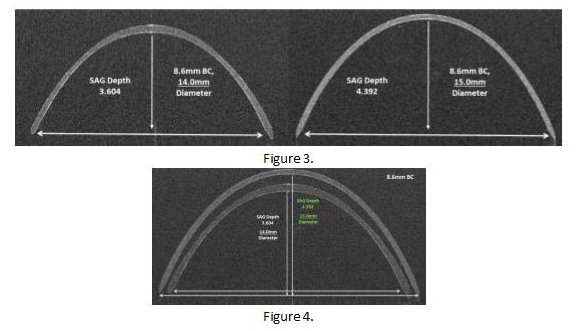
The rule of thumb for the impact of SAG is shown in the figures below.

For a given base curve (radius of curvature) the SAG can be altered by varying the lens diameter, with the larger the lens diameter, the greater the height. (Figure 5)
For a given diameter, the steeper the radius (base curve) the greater the height. (Figure 6)
Summary
For today’s custom soft lenses, it’s better to think in terms of SAG height rather than simply base curve changes alone.
Your ABB Optical lens consultant can walk you through exactly what those changes should be for any situation.
References
- Van der Worp, Lampa, Kinoshita, et al; Variation in sag values in daily disposable, reusable and toric soft contact lenses; Contact Lens and Anterior Eye; https://doi.org/10.1016/j.clae.2020.11.006
- Giovanzana, Talu, Delia Nicoara; Sagittal height differences of disposable soft contact lenses; Int Ophthalmol (2020) 40:459–465

